Dobrosława Nowak: The exhibition ‘Time and Foam’, which you are curating at the Jan Matejko Academy of Fine Arts in Kraków, can now be seen online: here.
Michał Zawada: Yes. I truly regret that the gallery is closed at the moment. Fortunately, thanks to the efforts of our new university rector, Andrzej Bednarczyk, we managed to prepare a virtual form of the exhibition. We are also planning a camera tour. In the case of an exhibition, which is all about the freedom to move around in real space (combining the experience of materiality with what accompanies it in the texts), the online version necessarily castrates our experience. However, it gives some idea of what is at the exhibition and its general display concept. Most of the artifacts at the ‘Time and Foam’ exhibition require direct contact. We have paintings, objects, art books, videos, and installations to see. Basically, all works require a very tender and patient look, and achieving such a state in the screen version seems unattainable yet.
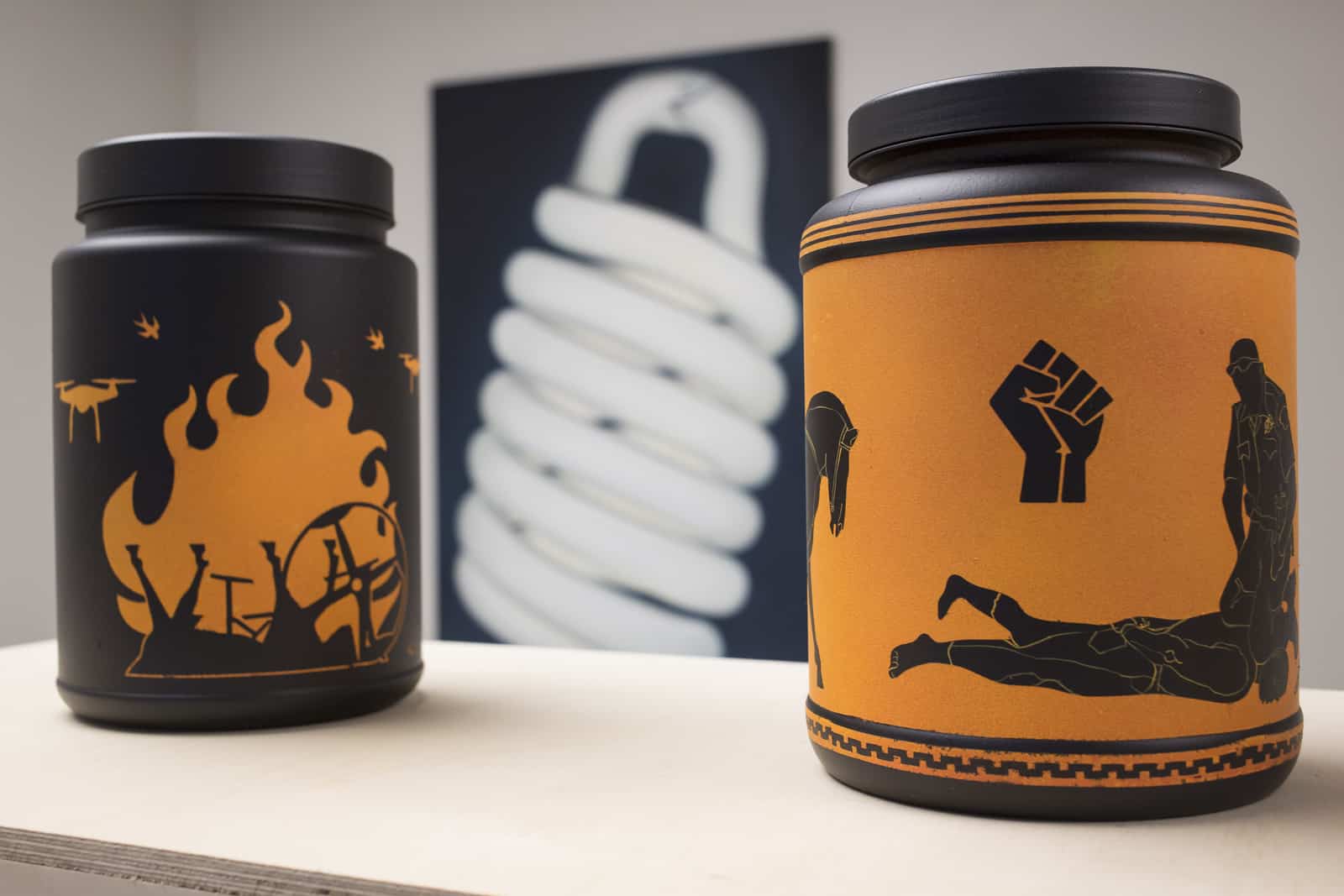
‘Time and Foam’ exhibition, photo: Filip Rybkowski
DN: The theoretical basis of the exhibition is the concept of fluctuating space-time as it appears in John Archibald Wheeler’s quantum foam and its subsequent musical interpretation by Gérard Grisey, Le Temps et l’Écume (1988/1989).
An attempt to tame such enormous and distant issues reminds me of two poems by the Polish poet Julian Tuwim: ‘Benny the Dreamer’, who lies in a meadow and dreams that ‘the whole sky is made of a chocolate cake,’ and ‘Mr Little and the Whale’, who sets off to meet a whale and ends in his nostrils without even knowing it. Most of us associate the foam in the title with bathwater, and thanks to the exhibition we transfer this mundane experience to another dimension. This exhibition tames the abstract concept of time.
What does time matter to you? Is it a topic that has been inspiring you for a long time, or is it a response to what is currently happening with time: how the perception of it has changed in the context of its pandemic ‘arrest’?
MZ: The titleword ‘Foam’ may in fact sound enigmatic and constitutes a kind of initial irritation or ‘friction’. The common understanding of this concept turns out to be of little help. As a matter of fact, it is a literal repetition of the title of Gérard Grisey’s Le Temps et l’Écume. This French spectral composer used the concept of the space-time foam that, in the Wheeler hypothesis, would define the structure of the functioning of reality on very small scales. Let’s add that this hypothesis was never confirmed, because there is no apparatus that could empirically verify it. Like Grisey, I use the concept of foam in isolation from its scientific lineage, as a capacious metaphor for expressing the idea of fluctuations, but this at the level of our understanding of time.
The exhibition accompanies the international science festival Copernicus, with which we have been cooperating since last year along with Professor Andrzej Bednarczyk and Professor Kinga Nowak. This year’s edition was dedicated to the problem of time, and the exhibition I was to prepare naturally revolved around this concept. I thought for a long time about how to nut out such a difficult and capacious problem. It turned out that I’m possibly most interested in how we interpret time through historically constructed narratives. Thus, history as a specific story became the main conceptual tool. From the very beginning, I was faced with the question of how this modern invention affected our late capitalist reality.
I would like to add that our time-based exhibition is framed by very special circumstances: on the one hand, an unprecedented period of pandemic which in itself significantly reorganized our understanding of time, and on the other, a revolutionary period in Poland following the scandalous ruling of the Constitutional Tribunal on the 22nd of October. Not to mention the election in the USA, fascism’s returning in various places, and the climate crisis. To put it bluntly, we live in a period of a special kind of ‘foaming’ of time, and I hope that the echoes of these events are visible in the exhibition.
DN: What do you mean by ‘constructing historical narratives’?
MZ: This is a very complex problem. I take the stand, close to that of Peter Osborne, saying that what characterizes modernity as a Euro-Atlantic cultural formation spanning the late-eighteenth and twentieth centuries is the invention of a new way of understanding time, i.e. the harnessing of historical time by dynamics of constant self-denial. The distillation of the methodology of historical sciences was of particular importance to the formation of social modernity. This is the moment when the concept of the new as opposed to the old was invented. It was then that a radical demarcation was made, an artificial cut in temporality, dividing it into tradition and modernity.
Historical time, as we understand it today, is not given; it is invented, constructed. Similarly for the whole concept of writing history: its narrator is no longer invisible. We are far from an objectified understanding of history as a set of systematized, indisputable facts that can be unambiguously recorded on the timeline and which have a logical course and imposed teleology. The same applies to the history of art, although most often we deal with its simplified version found in the school core curriculum. This is something seemingly closed, decoded, already interpreted and defined. When we look at the captions of old art reproductions in textbooks, we take them for granted; we are often unaware that behind these lapidary descriptions there is a still working machine of historical attribution, dating, and scientific debate. We also forget how many factors in writing a history depend on the way the narrative is constructed by a particular historian and have nothing to do with an objective, unquestionable, and unchanging truth.
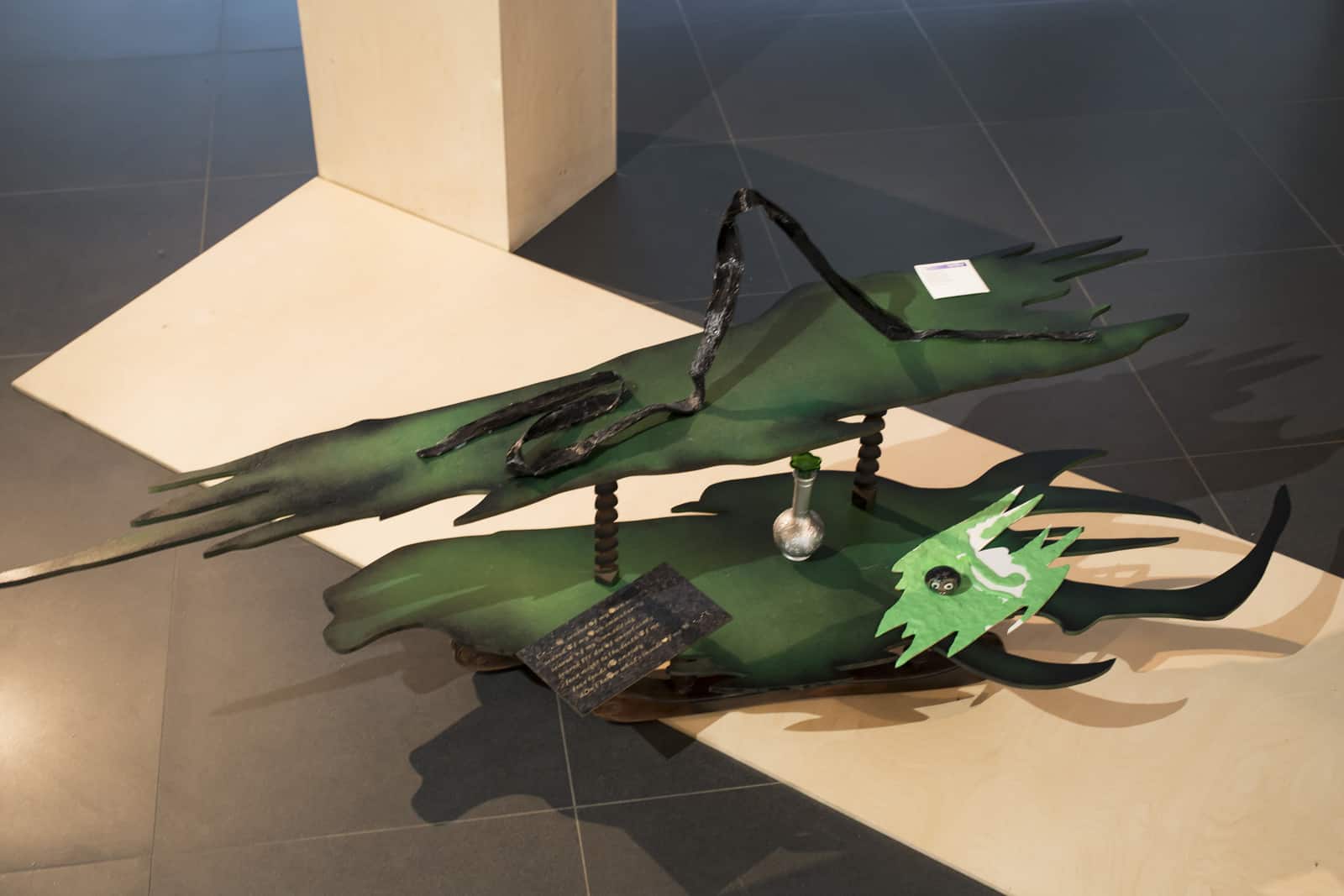
‘Time and Foam’ exhibition, photo: Filip Rybkowski
DN: In the exhibition, we encounter ‘artifacts’ of the present. I am talking about Vases (2020) by Bartek Górny and the works of Marta Krześlak from the series Microclimate (2018). Górny styles the plastic packaging of dietary supplements as Greek vase paintings depicting contemporary tragedies, such as the murder of Georg Floyd or the coronavirus.
This is a big mental shortcut, but I am curious how, as an art historian, you feel about such ‘messing with history’? You write that artists ‘never believed in the possibility of objectively reconstructing time’.
MZ: I think that an art historian can learn methodological fluency precisely from artists and their actions. In the artistic space, we openly allow ourselves a lot of confabulation. We tell the story in an open manner, not trying to hide behind any camouflage of objectivity. We know that an author can set all sorts of traps for us. By confabulating, they reveal things that are only sensed, yet unnamed. They give us the opportunity to penetrate deeper, to be tempted to imagine a non-obvious future for example. Marta Krześlak’s objects are very interesting because they are a gesture of imagining the future after us, after the end of humanity, constructing a vision of what the archaeological remains of our civilization could look like. These are small, seemingly trivial plastic objects from the remains of our everyday life, which, in her story, survive our potential extinction. The whole set Microclimate (2018), of which I show only a small segment, creates a dump of such civilization-rubbish. These are works that allow us, as recipients, to move for a moment to times that we will never be able to experience.
DN: I find these works sweet, somehow naive, in a positive sense.
MZ: Yes, this is a very relevant observation. This whole cycle could have a depressing effect, because it describes us in the future perfect tense, i.e. the one in which our civilization has already ended. In the project, we take the point of view of a being who discovers it without our participation. However, Microclimate isn’t pessimistic, and the objects created by the artist are in a way amusing. I really appreciate this gesture of Marta’s as a kind of taming of a terribly difficult topic for us. On the one hand, we diagnose ourselves with a climate depression; on the other, by living on the edge of time, we may collectively experience some kind of thrill associated with this strange privilege of seeing the end of something that started a long, long time ago. It’s obviously an unpleasant privilege, because probably each of us would like to imagine a longer time for us as species. So we’re trying to figure out a way to deal with something so final. Heidegger (whose portrait by Witold Stelmachniewicz can be found at the exhibition) claimed that our first contact with temporality comes through anticipating our own death. According to his notion, our existence is ‘being-towards-death’. The entire structure of our temporality is thus dependent on the fact that we realize our end. Maybe we are experiencing something like this collectively now? Each of us tries to figure it out in our own way.
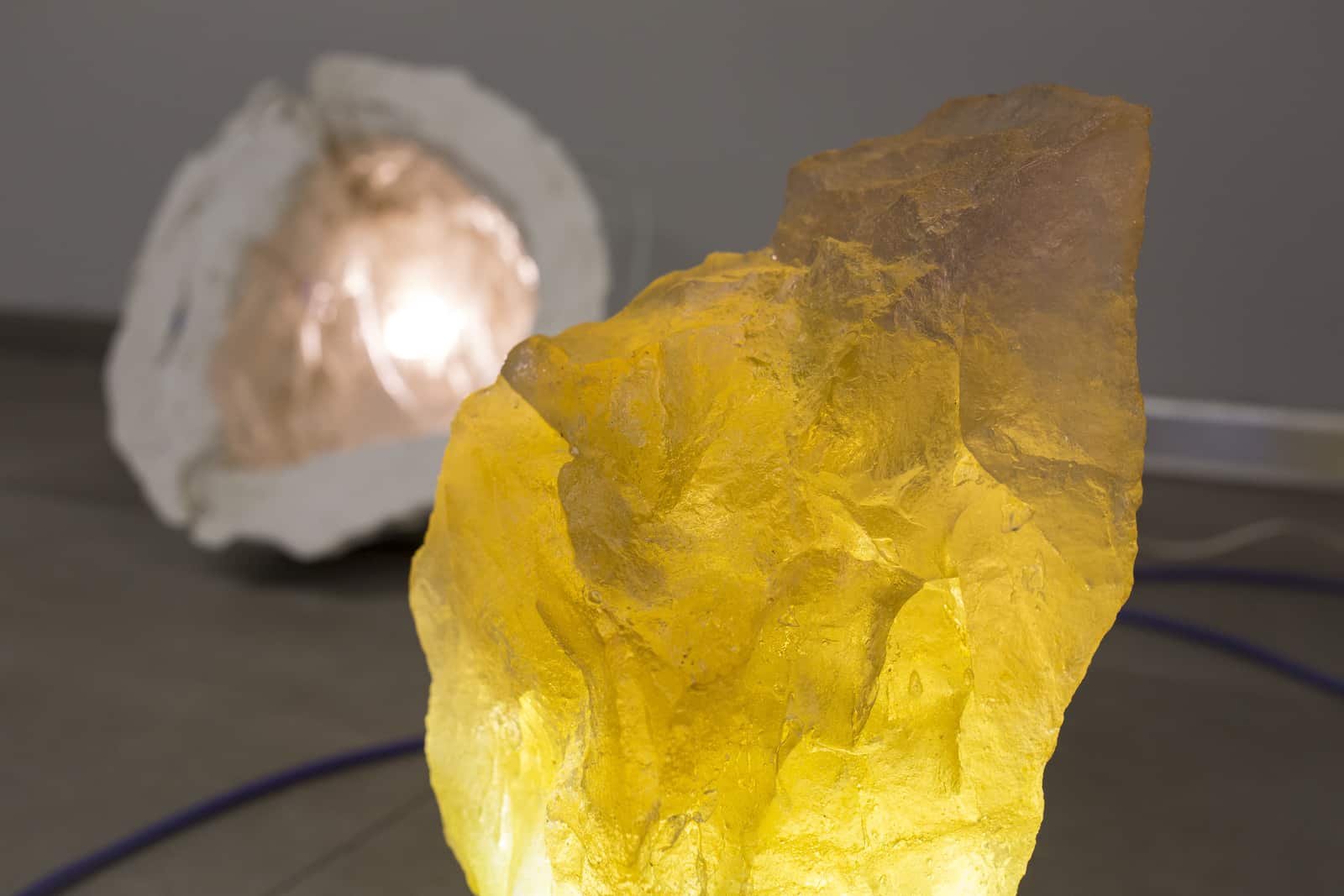
‘Time and Foam’ exhibition, photo: Filip Rybkowski
DN: Let’s return to the topic of the game that artists play around the notion of time, the game of creating confabulations around it.
MZ: Take for example Bartek Górny’s Vases, which is a very essential nexus in this exhibition. In terms of the content, the artist focuses directly on the present and considers the media in its capacity to mediate. The experience of scrolling through news is something that probably accompanies most of us: we read, we get excited, we try to filter important news from irrelevant, news from fake news. When talking about the present, Bartek ironically uses the ancient form, embedding this stream of events that is difficult to understand in an apparently stabilizing medium, rooted in a temporally distant culture. Maybe this gesture ennobles a present that is slipping through our fingers? Bartek gives us a tool that stops time, at least for a moment. He cites a classic form, which we associate with something eternal because it’s locked in a museum, that coffin of civilization, in which the course of events is stopped. Boris Groys in his text ‘On Art Activism’ compared the modern institution of a museum, established at the end of the eighteenth century, to a cemetery. It’s a place that takes objects out of their daily functioning (sacred, representative, commemorative, or any other), closing them in a white cube, timeless space, for eternity, stopping the active course of history. In this respect, museums are graveyards of time and history, because they give the wrong impression that something can be kept and preserved for all eternity, as if human history would never end and art were eternal. This is well illustrated at the exhibition by Filip Rybkowski’s installation Carborundum (2018) or the juxtaposition of Łukasz Stokłosa’s work with the nineteenth-century still life of (Jan Matejko’s student) Tomasz Lisiewicz.
DN: However, it seems to me that humans are psychologically conditioned to find a cave that we can always return to. Perhaps galleries or museums have become such places, have stopped, as you say, the active course of history or the development of art, but in order to become socially or culturally protective to our well-being.
MZ: What speaks for it is the fact that the establishment of the museum as an institution, at the end of the eighteenth century in France and Germany, coincided with the progressive process of secularization in Europe. The presence of the absolute, which functioned as a social keystone and somehow guaranteed the existence of eternity and a natural, metaphysical order, was taken over by new temples, temples of art, with their promise of the absolute, timeless essence of art, which received its updates in the form of individual works and artifacts, found or created on an ongoing basis. It seems that the process of creating museums and the modern concept of art, in addition to participating in the wide ranging program of imperial expansion of our continent, may also result from the urge to stabilize and seek something greater than ourselves.

‘Time and Foam’ exhibition, photo: Filip Rybkowski
DN: The graphic illustrating the exhibition reflects its topic very well, owing to its metaphoricity and openness. It’s associated with foam and also reminds me a bit of the world of Minecraft — the last one probably because quite recently I had the opportunity to curate a project of the LUKA 5G Group where they created a huge gallery in this game.
MZ: Nice association. Przemek Wideł is responsible for the graphic. It was a great cooperation for us, because he reacted quickly to the task of creating the visual identity of the exhibition. He instantly delved into the subject and tried to find a way to visualize Wheeler’s concept. I think he did it very well.
DN: This exhibition consists of thirty artists associated with the Academy of Fine Arts in Krakow. Why did you invest in this artistic environment? Is there anything special that now characterizes Krakow? Was it a practical decision since you lecture there, or maybe something more?
MZ: I really wanted to build this exhibition consistently using the resources of our Academy. The Academy, often deservedly, from outside is identified with tradition, preserving historical myths, being unmoved by the present. This provides an interesting starting point for reflecting on time and history. By creating the exhibition, I wanted to build an interdisciplinary and multigenerational team of people whose artistic attitudes in some dimension came into contact with the Academy. So we have the opportunity to see works created in the late nineteenth century, mid-twentieth, and in 2020. We have teachers and learners. We have those who built this institution and those who distanced themselves from it. In a way, it is also an exhibition about an institution and its relation to time.
Krakow is currently characterized by a very interesting independent environment: female and male students’ actions, activities of informal groups, small galleries, artist-run spaces. Due to the fact that in Krakow, compared to the capital, there is practically no market of thriving commercial galleries anymore, the entire community is based on animating grassroots events. This is Krakow’s great strength, still underestimated outside and treated with a pinch of salt. It’s cool because it shows the need for community, for creating in groups and circuits alternative to the establishment. This gallery void generates new initiatives, Potencja being a very good example.
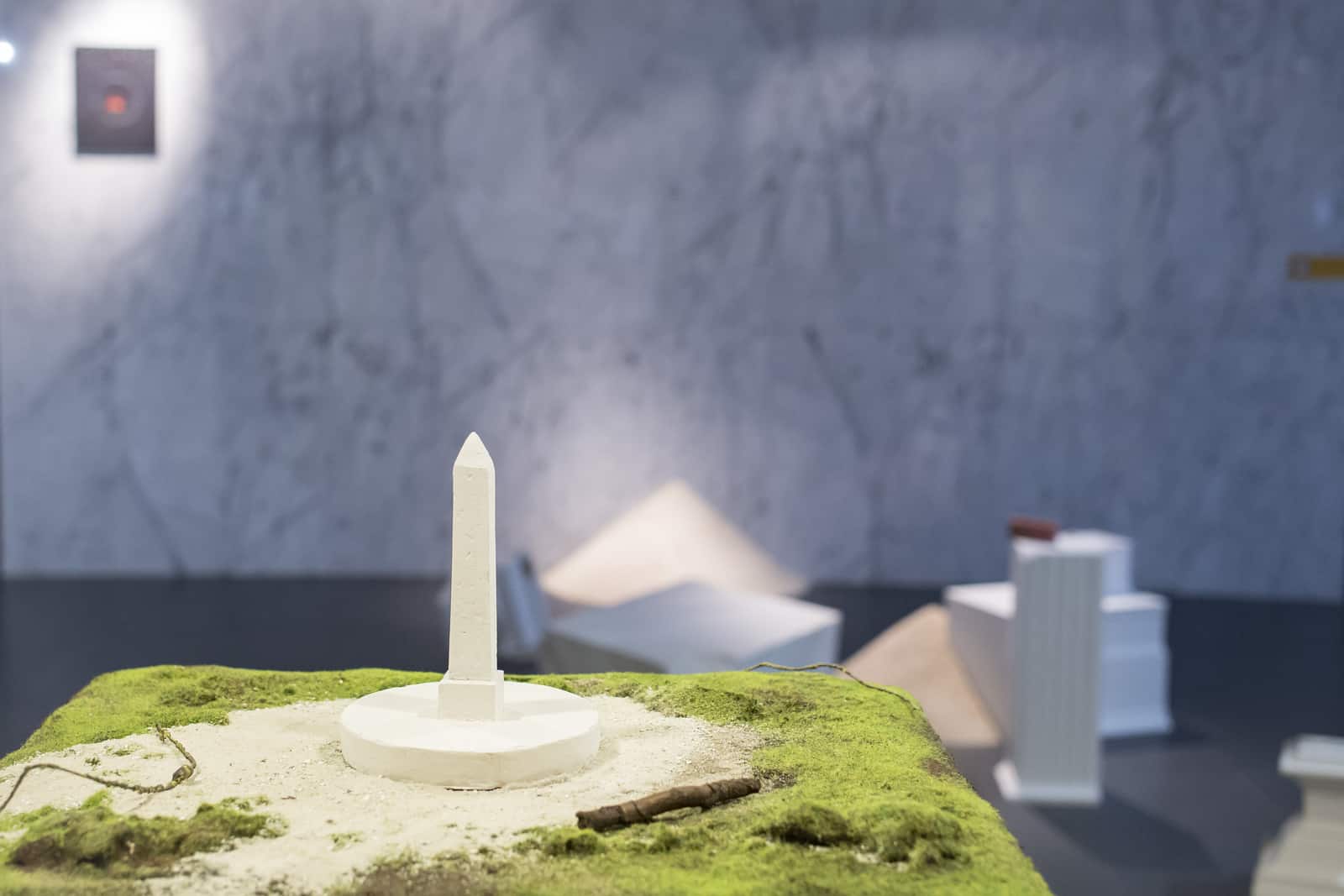
‘Time and Foam’ exhibition, photo: Filip Rybkowski
DN: Is Krakow famous for painting?
MZ: You could say so. I don’t want to refer to history, Young Poland, or post-war painting, but it’s worth emphasizing that at least since the time of the Ładnie art group and Wilhelm Sasnal, Krakow has indeed been associated with the great comeback of painting. It’s a renaissance that takes place in several waves. After Ładnie, there was an informal group of artists associated with the movement that Jakub Banasiak called ‘Tired of Reality’. It was a tendency towards, to put it simply, neosurrealism. The most characteristic representative was Jakub Julian Ziółkowski, whose works greatly influenced a number of artists in our milieu. Then there was Potencja, which is an artistic group composed of three painters associated with our department. Of course, one cannot overestimate the merits of the Academy in shaping young artists, because it’s largely a matter of the atmosphere between the students themselves. I think that at the Academy, we generally learn from our peers and not necessarily from ‘beaks’, although, of course, if you find a good one, so much the better. Worryingly, this peer contact is very limited due to the protracted lockdown.
DN: Grisey with his piece Le Temps et l’Écume (1988/1989) ‘reflects the relativized course of time in the form of three modalities built on the same musical material: time in the perception of people, birds and whales’.
In the photographic series Ice Age (2016) exhibited here, Zbigniew Sałaj empathizes with glaciers, emphasizing how much we influence their destruction. In the description, you notice that the time of glaciers flows slower, e.g. one hundred thousand years in the case of the North Polish glacial, and their movement is almost imperceptible to humans. And yet humans, in their ‘power to subdue the Earth’, are able and permit themselves to accelerate the course of their lives.
Do other artists at the exhibition also show posthumanist attitudes? Does anyone other than human talk about time at this exhibition? Do we have the opportunity to experience a non-human perspective, for example told by animals?
MZ: Posthumanist themes appear in several artists’ works. The aforementioned works by Marta Krześlak literally show the post-human future. Similar themes are raised by Karolina Jarzębak’s work Wabba lubba dub dub (2019), which was previously shown at the ‘Primer for City Residents’ exhibition, a space run by Arek Półtorak and Martyna Nowicka in Krakow. It shows a hypothetical museum of humanity created for aliens trying to understand the phenomenon of our planet. Zbigniew Sałaj, focusing on the time of glaciers in an ironic but also poignant way, illustrates the lasting, silent presence of the ice wall which moves in an unnoticeable way for us, but also contains an absolute potential for change. It’s worth remembering that glacials definitely shaped the landscape of our planet, including our region. This frozen dead matter has a much greater efficiency than the entire human civilization.
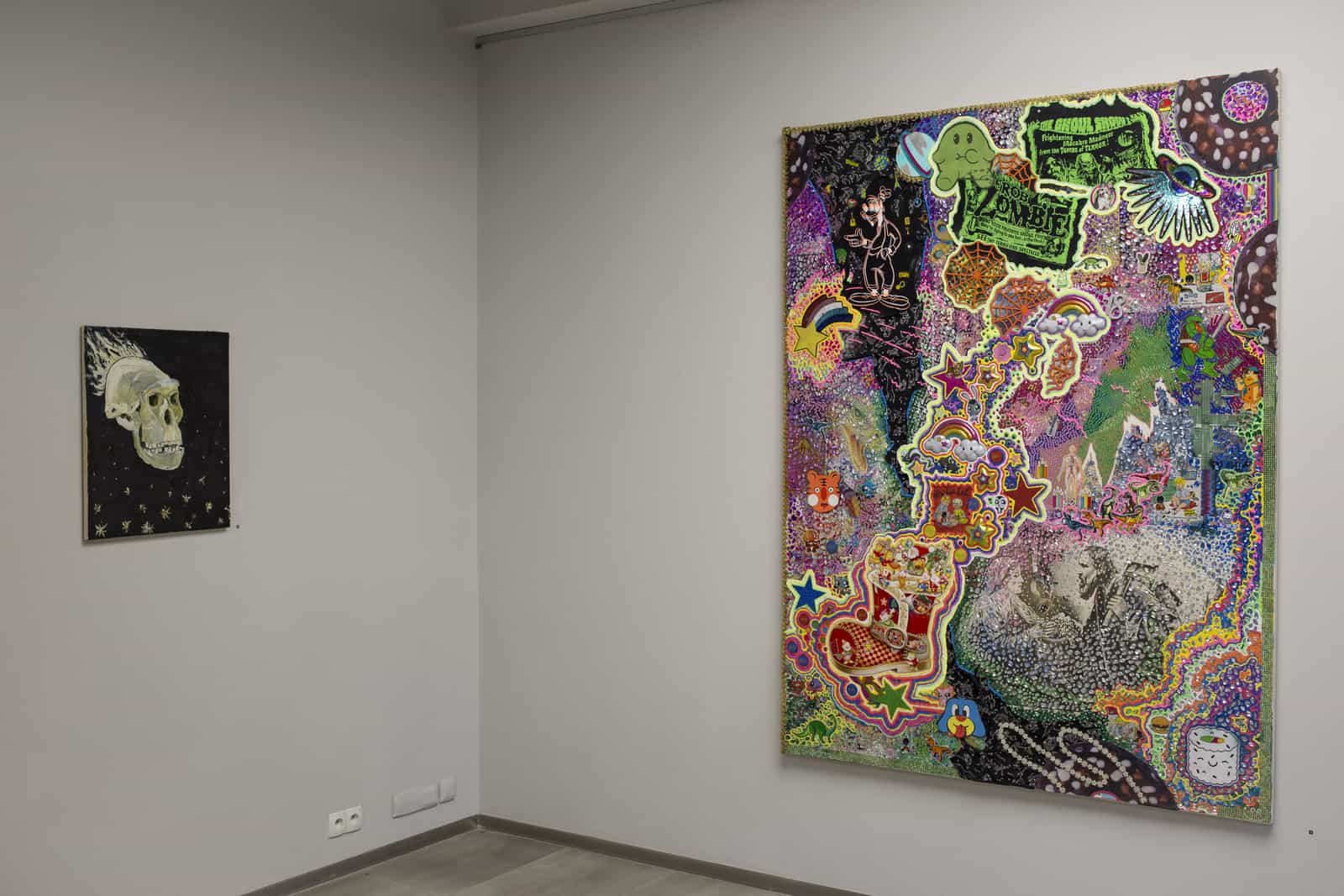
‘Time and Foam’ exhibition, photo: Filip Rybkowski
DN: In Zbigniew Sałaj’s work, my attention was drawn to the empathy that the author has for objects, similar to that which occurs between living creatures. It’s only because glacials move so slowly that we are unable to observe it, that we give ourselves the right to treat them as inanimate objects. As part of posthumanist thought, we must let go of this position of feeling like we are the only living, feeling, thinking beings on Earth, because it works against us. Such an altered perspective can be found in paintings by Martyna Czech, who often portrays sentient rabbits with whom she declares a closer bond than with people. When I ask about post-human attitudes, I mean this particular feeling, the one that accompanies, for example, Sałaj’s work.
MZ: One of the key works at the exhibition raising this theme is Krzysztof Maniak’s Untitled (Time and Space). This is a long record of his performative micro-interventions in natural space. These are performances that he documented for the camera in the vicinity of his family home in Tuchów, in the forest, meadows, and fields of the Polish province. Nature sets the narrative rhythm here: the whole thing is divided into four parts, the four seasons. The work documents the coexistence of his body with nature, showing Maniak embrace trees, for example, or, with a beautiful and empathetic gesture, insert his silhouette into intervals between trees. This is a very important thread when it comes to the entire concept of the exhibition, because, à rebours, it shows that we have lost contact with the natural flow of time. I believe that in order to forge the capitalist system, we looked for better and better methods of measuring time, of mechanically taming it, in order to be able to trade our life converted into its units. We are subject to the unnatural rigor of time, arbitrarily adopted measures, the division of the day into hours, into seconds, which has an obvious implication for our functioning as biological beings. It’s kind of obvious, but perhaps we are too rarely aware of it. Already in the interwar period it was noticed that the mechanization of work, ripping not only the proletariat but humanity in general from the natural course (whether from people moving to cities or a general lack of respect for nature), can have a destructive impact on our existence. These processes, however, have been so deeply imprinted in our understanding of the contemporary, that it’s difficult for us to return to the original rhythm. We live with the feeling of being in full control over the biosphere, which is obviously wrong. And this is exactly the feeling that will be our downfall. Another posthumanist attitude is presented in Dominik Stanisławski’s work Żarzenia 1 (2006-2020). At first glance, it looks like a photogram or a photograph. In reality, it’s a sheet of cardboard that covered a window in the studio of Grzegorz Sztwiertnia and Zbigniew Sałaj for the purpose of darkening the screening room. It hung there for 15 years and was completely eaten away by the sun during that time. In this respect, it’s a phenomenal example of work not created by human hands, a kind of acheiropoietos, in which the creator, without any interference, is sunlight. It also functions as a kind of clock that has registered several thousand days of exposure independently of human influence.
DN: Reading your text, I thought to myself that we have created a situation in which time is hostile to us, it’s not our ally, we are fighting windmills. We have to buy back the time: time for hobbies, time for holidays, time for ourselves. We have to tear it out of a system that, paradoxically, we have devised for ourselves to live in, and which has become harmful. We ran into a corner, although we certainly meant well at some point.
MZ: Jonathan Crary in his book 24/7: Late Capitalism and the Ends of Sleep accurately described the phenomenon of the colonization of human time by capitalism, stressing that the last bastion to be infected is our sleep. Everything else has already been capitalized, subjected to the regime of work, performance of tasks. We live in a time when the former unambiguous division between leisure and working time has completely blurred. We work at home, in a place where we live, eat, and sleep. A kind of a totem confirming this state of affairs is the smartphone that accompanies us constantly (in Karolina Jabłońska’s work at the exhibition, we see a girl who falls over and breaks the screen of her phone). We have reached the truly mature phase of capitalism, the times of real subsumption of life into capital. This process took a long time, but we have lived to the point when work in the sense of wage labor may never leave us. For Crary, the eponymous sleep leaves us with a shadow of a hope that there may be time out of the regime, because it’s inherently unproductive. The remark that our social value is measured by productivity is an observation as trivial as it is frightening. If there is anything truly valuable in art, it’s the fact that it gives us room for potential unproductivity, wandering, hesitation — phenomena that totally break out of the capitalist productivity paradigm. Art capitalizes well and works with this system, but at the root of its practices there is a moment of pause and redundancy. If anything could be a defense of the idea of art for art’s sake, it’s precisely that it is a space in which we allow ourselves to arbitrarily say that we refuse to be reduced to pure productivity. The figure of an artist is very strongly related to inactivity, which often irritates people outside the environment, because it’s an ostentatious point of the finger that something may be wrong with life subjected to a strong regime and pressure. The artist’s work is rarely associated with the generally accepted norm of work. Serbian artist Mladen Stilinović captured it perfectly in the series of photographs The Artist at Work (1978), which is his self-portrait in a dream, during which he nervously rolls from side to side. At the ‘Time and Foam’ exhibition, we can see several projects that relate directly to the problem of the creative process.
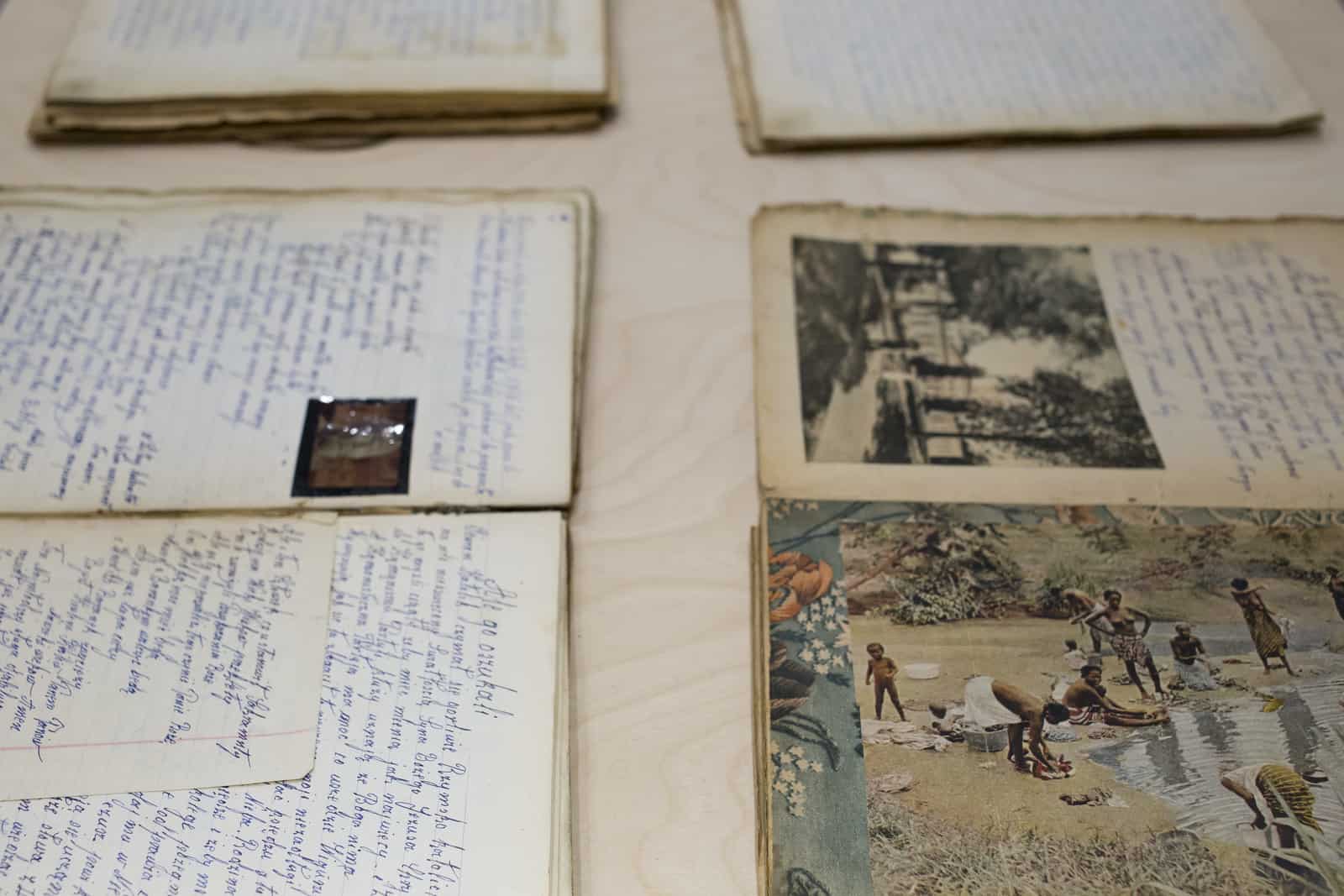
‘Time and Foam’ exhibition, photo: Filip Rybkowski
DN: What is the future of time?
MZ: If I were to relate to objective attempts to capture time, I would definitely give the floor to physicists. However, if we focus on its subjective dimension and human struggles with its interpretation, a topic of serious importance and a high stake opens up in front of us. From my perspective, the most important thing is to realize that history is not over yet. It constantly opens up an infinite number of potentialities. Not all of them are related to the destructive regime of capitalism. There is still a chance for a time of change, a time of revolution, a time of community, a time of fighting fascism or the ubiquitous social consent to violence. If we open up to such a future of time, perhaps it’s not too late for us yet.
Interviewed by Dobrosława Nowak
Edited by Isaac Lucia
A curatorial statement: Michał Zawada
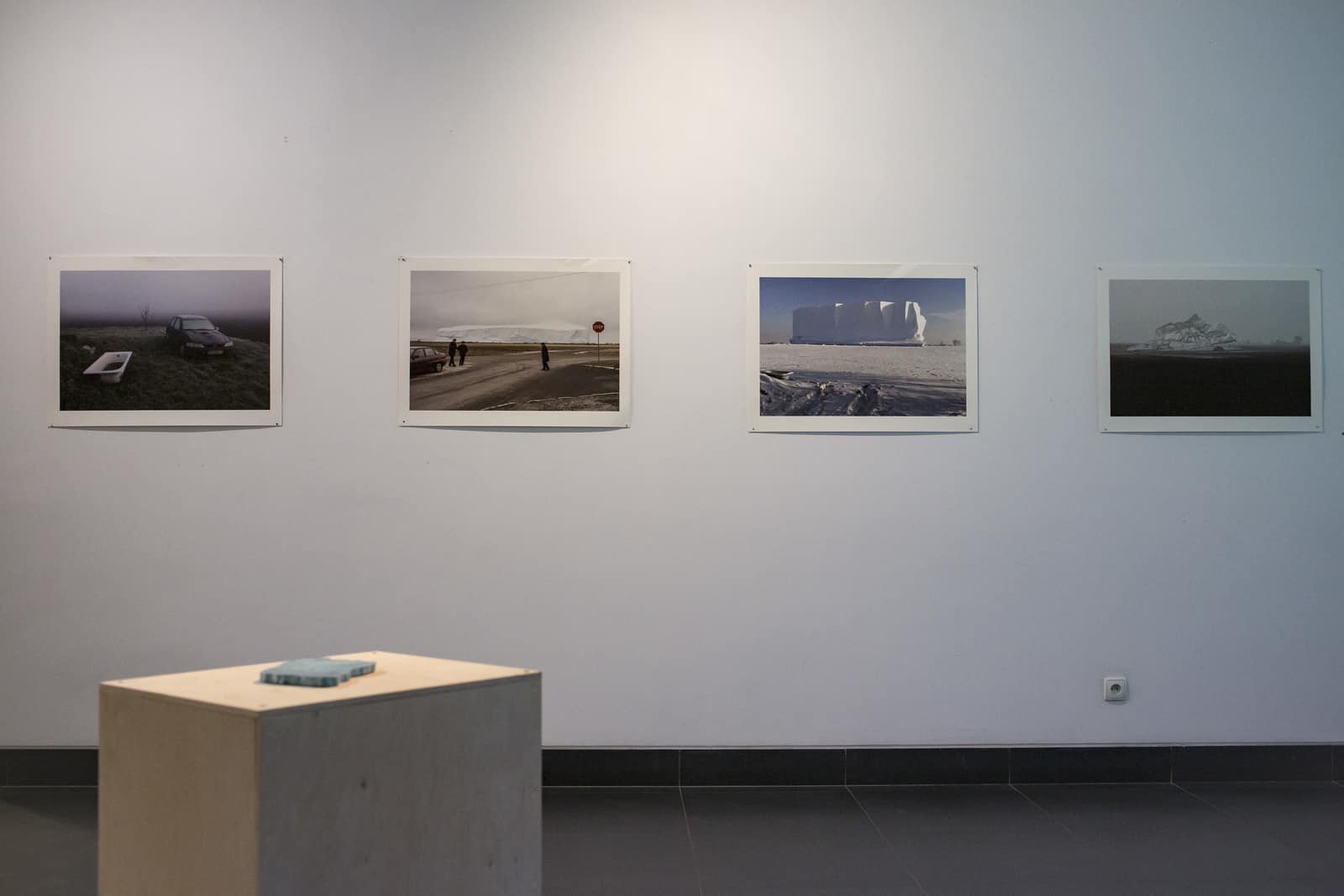
‘Time and Foam’ exhibition, photo: Filip Rybkowski
CURATIONAL STATEMENT:
In 1989, French spectralist Gérard Grisey finished his piece Le Temps et l’Écume, said to be inspired by a concept originally suggested by American physicist John Archibald Wheeler, who claimed that space-time fluctuates in the form of quantum foam – turbulence and whirlpools, which can only be perceived at the Planck scale, or 10−35 metres, to be more exact. To this day, scientists have been unable to prove this hypothesis experimentally – there are no devices in existence that could demonstrate its compatibility with the actual real structure of the world, forming the fabric of reality. Grisey made an attempt at interpreting Wheeler’s claim, using it as a rather capacious metaphor for the temporal structure in which he played his musical universe. In a piece for four drum sets, two synthesisers and a chamber orchestra, the space-time foam enables the artist to present the relativised course of time in the form of three modalities based on the same music material – time as perceived by people, by birds, and by whales.
The Time and Foam exhibition has no ambition to get any closer to the fundamental laws governing space time. It does not provide any answers to the most basic questions concerning the passage of time, nor does it try to illustrate the state of research carried out by physicists, philosophers, neuroscientists and historians. However, like Grisey’s gesture, it builds metaphors collected within the framework of a single showcase, which make up constellations that illuminate some issues, questions and confrontations for a brief moment, in the face of the elusiveness, relativity and inconsistency of the time in which we are all immersed. Thus, the foam, detached from its astrophysical context, turns into a metaphor of sorts, leading to the emergence of subsequent associations and metonymies, which pop up like bubbles.

‘Time and Foam’ exhibition, photo: Filip Rybkowski
The pieces presented at the exhibition will constitute an attempt at creating a story about our late-stage capitalist reality, in which time is both fragmented and uniform globally. Derivatives and transactions, permanent flow of capital, flow of people, cheap flights, atomic clocks, unified, eight-hour working day, work around the clock and sleep deprivation seem to contradict the biological and natural time, as well as its regular variability. These days, it may be even more difficult for us to understand what time actually is and how is it perceived by humans.
What then is time? If no one asks me, I know what it is. If I wish to explain it to him who asks, I do not know.1
There are few concepts as ambiguous and elusive as time. We do not know what time is, although we refer to it in all aspects of the existence of our world. Does it exist independently of space, or is it immanently linked with it? Does it exist only in our minds, or perhaps solely in events and actions? Is there an eternity within which our time occurs? Is there one time or a multitude of its independent threads? Is it steady? When does time enslave us, and when can it promise us liberation? What kind of access to the past do we have, and what kind of future can we expect?
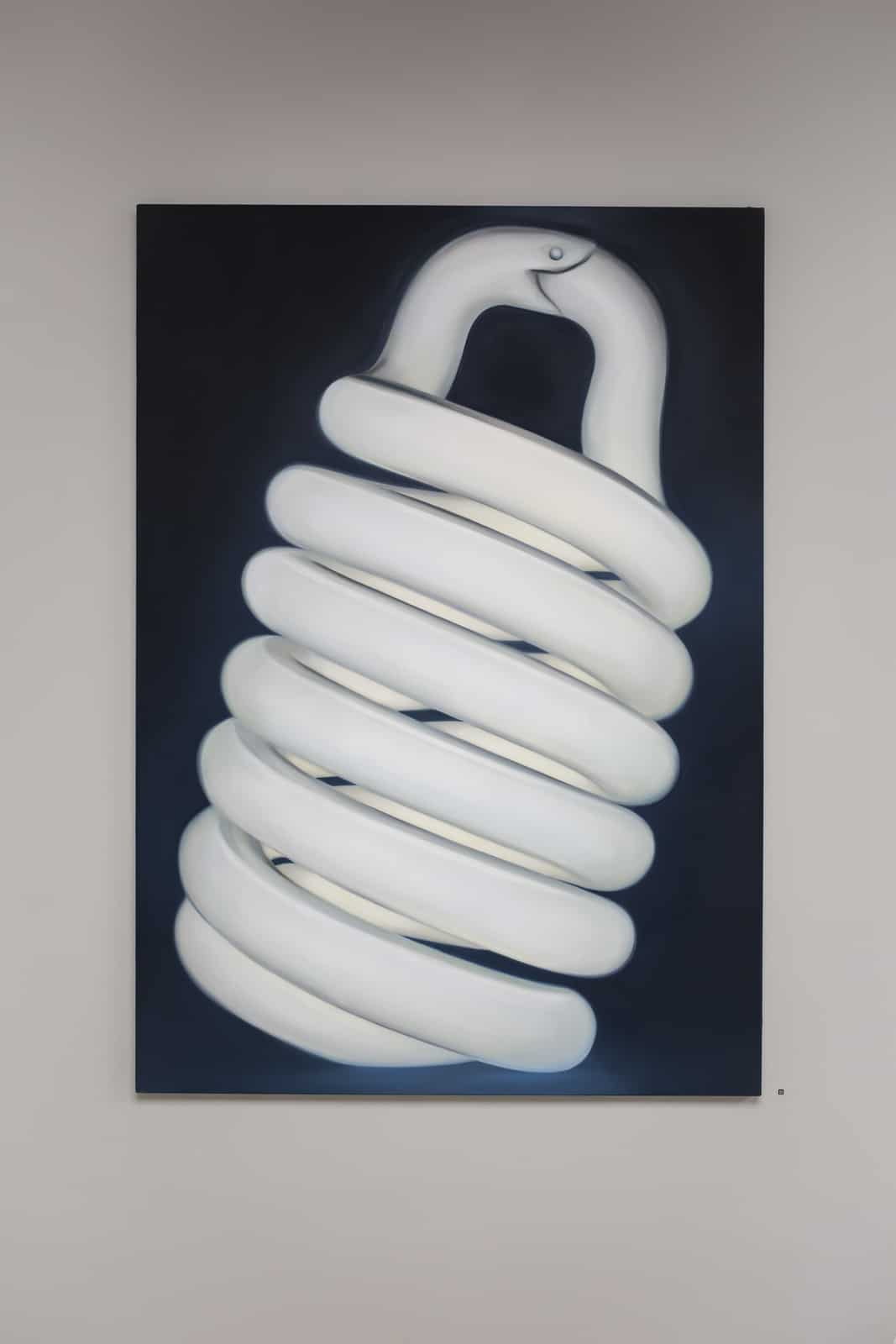
‘Time and Foam’ exhibition, photo: Filip Rybkowski
We are unable to answer any of these questions. In fact, we cannot even relate to the vast majority of them. The problem of time makes us aware of how poor our perception is and how inadequate are the tools that we use to explore our relationship with reality. Time is relativised by speed and by gravity, but also by mental states, by memory and imperfect measurement methods. One could even say that there is no time – it exists only as a fragmented figment. Even our bodies teach us that we cannot control it in any manner. The things that we interpret as an ongoing and present sensory experience is information reaching our senses with a delay, albeit fractions of a second long – the time our brain needs to process and assimilate external stimuli. What we hear and see happens in the past, in the exact time it takes for the sound and light waves to propagate. What we consider permanent points of reference in fact do not exist in our time.
We were conditioned by our culture to understand time as a linear sequence of past, present and future. What already happened is a thing of the past and remains unchanged, and what will happen is still unknown. This singular time visualised on an abstract timeline starting in the past and moving towards the future, which goes on like ‘beads in a rosary’ (Benjamin), is also the kind of time that we learned to measure, which gave us a sense of apparent control over something that we were never able to understand. The time measured and counted with seconds, minutes and hours is the time of capitalism and its hired work – together with other standardised measures, such as distance and weight, it became the cornerstone required for its creation. The invention of the clock was tantamount to inventing our capitalist modernity, giving rise to the time of European nations, powers and colonies. It was the time measured in Greenwich, the centre of Europe, which systematically ‘discovered’ the remaining continents, year after year. This time measured by clocks is not dependent on any natural factors, solar cycles nor Earth’s revolutions. After all, this time exists ‘objectively’ – thus disciplining every living creature, enabling calling them to work according to an arbitrarily-set daily schedule. Global, unified time enables instant trading – including trading in time, as well as human (and non-human) bodies. It is also what caused – according to Franco ‘Bifo’ Berardi – life to turn into a paranoid fight against the passage of time. Time is the last space left for us to colonise, and the only way for the capitalism of today to expand involves intensification of time and speeding up our mental rhythms. In one of the myths of our modern times, we were promised that time meant progress, and that the future is an improved and developed version of the past; however, everything seems to indicate that time is slowly (although increasingly faster) leading us towards our extinction, and the clocks will indicate this moment with murderous precision.
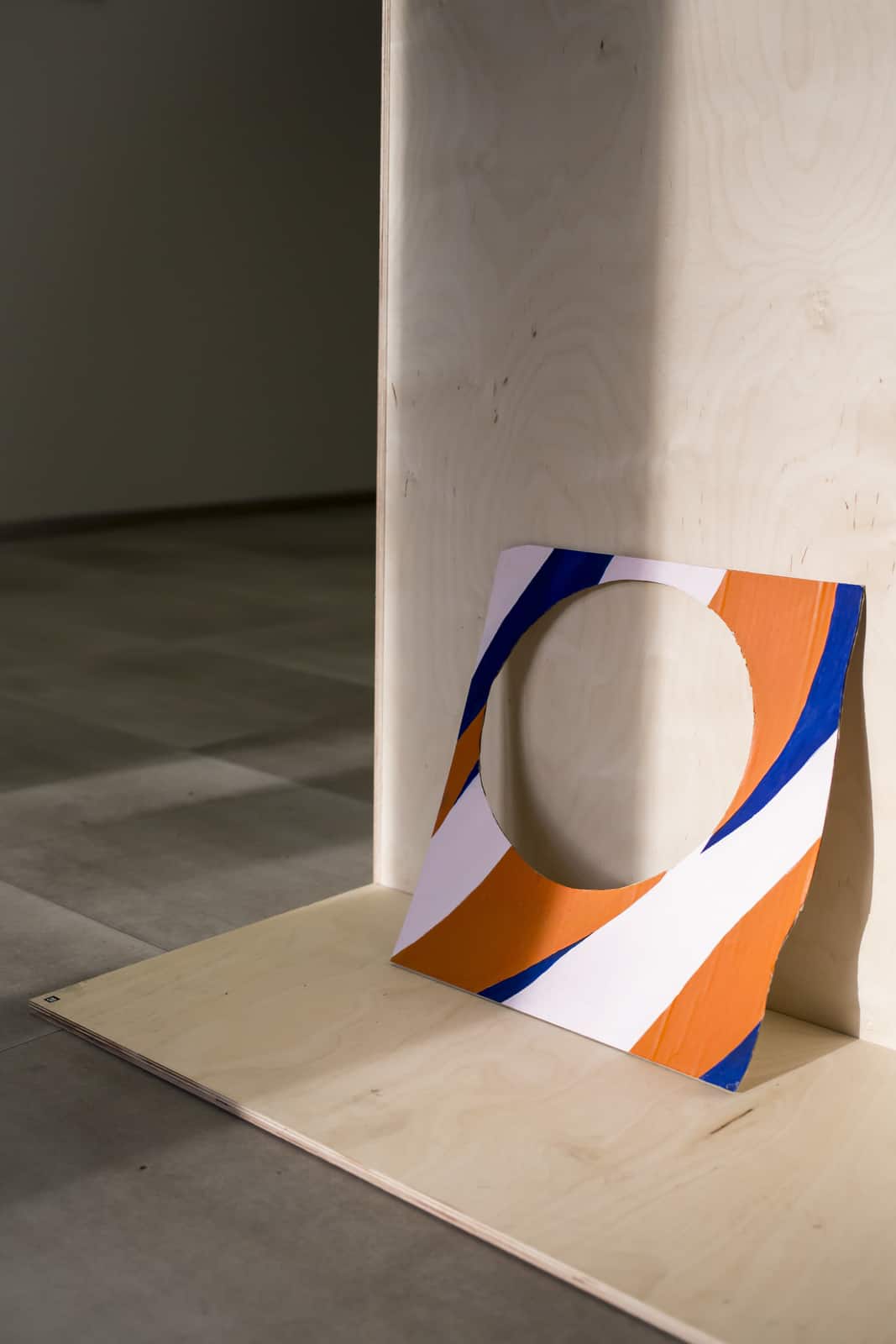
‘Time and Foam’ exhibition, photo: Filip Rybkowski
We are looking for ways to free ourselves from modernist attempts at standardising time and finding objective forms of measurement or ways to make it more disciplined. Nietzsche, Bergson, Benjamin, and Agamben help us reject the naïve belief in the uniformity, teleology, as well as the linear nature of time, instead replacing them with assemblies and combinations of fragmented strands, paths, currents, and layers. In spite of its elusiveness, we try to somehow present and interpret this phenomenon, thus putting it into the framework of more or less coherent narratives – and this occurs regardless whether it is done by physicists, historians, aestheticists or biologists. In this respect, history is a particular narrative, which makes us aware of the structural nature of our presents and their preceding pasts. Abandoning the positivist belief in truth grounded in facts would enable us to understand history as a process of building a narrative that always hinged upon the ideological and contextual affiliation of its narrators, not unlike literature. The artists never even fully believed in the possibility of objectively reconstructing time – by their very nature, their stories and narratives were intended to expose the subjective and the idiosyncratic in contact with historical
processes. Visual arts tend to oppose chronology as well as the logic of cause and effect, destroying what Walter Benjamin referred to as the ‘homogeneous and empty time’ – sudden turns, vicissitudes, inconsistencies or synchronicities, breaking up or thickening the time in which they exist and function. They hinge upon the mirages of truth as well as liberal confabulations, lies, ironic turns, misrepresentations and ‘what ifs’ imagining the past and the future, while trying to capture the present. Thus, they elude the classicist and empiricist methods prevalent in art history, which consider artistic activity as fitting into a coherent, consistent story, and where empty spots are quickly filled in by crowds of zealous researchers. Artworks do not fit well into a linear, chronological reality, as the place and time of their creation should not separate them from other, even distant times and places.
Just as it is impossible to present the relations between various works in a coherent, unambiguous way, the works themselves also elude methodical interpretations, as each of them opens access to different temporalities – letting us access the known past, as well as the unknown future, creating the past anew and making it possible to imagine new futures.

‘Time and Foam’ exhibition, photo: Filip Rybkowski
Thus, the main axis of the exhibition delineated by the artists’ attitude towards the history – frothy and impossible to fully decode, indicating the relationship of the works to what was, what is and what will come, while refusing to respect the boundaries between these times. The anachronistic mode of existence of the works enables them to cross both spatial and chronological divisions.
On the one hand, the material nature of the presented pieces condemns them to be set in a historical order, that is – by necessity – finite and impermanent. In spite of the fact that the modernist tradition – which goes hand in hand with the exhibition tradition – envisages pulling the works out of their temporal context, enclosing them within the walls of institutions that offer them seemingly neutral spatio-temporal conditions, such as eternal museums and minimalist white cubes, their material foundations keep reminding the audiences about their fragility and their inevitable disappearance into the foaming oblivion of history. We are reminded of this phenomenon every time this eternal order is disturbed – by events such as the recent Notre-Dame fire or the systematic destruction of cultural monuments in areas engulfed in armed conflicts. Contrary to the hopes of our ancestors from Antiquity and in spite of the continuous development of conservation techniques, which are supposed to keep artefacts in a particular state or restore them to their purported original appearance, a work of art is inherently impermanent, and in its material layer is invariably affected by the passage of time, all while its immaterial aspect – meaning, content and ways of their decoding – is just as unstable, being dependent on ideology and its semiotic and representational mechanisms, forming barriers and obstacles that prevent understanding. This constantly fluid ideological mediation, which is impossible even to fully perceive, determines how we present the world to ourselves and others. Historically, art has always played a role in the creation of ideological systems, as well as took part in their representation.
On the other hand, the very same materiality offers the power to deny the course of history imposed by the imperial Western chronological and historicist tradition. As Giorgio Agamben pointed out – Every culture is first and foremost a particular experience of time, and no new culture is possible without an alteration in this experience.2 These ways of experiencing time are inseparable from concepts of understanding history. We can reimagine our relationship with art works, which will point us towards the ways of understanding time separable from the discipline imposed on us by the clock and the chronology of chroniclers. This anachronistic functioning of works of art, rewriting history, creating its alternatives and inventing the future, gives us tools to do just that. Art has the potential – which does not always have to be exploited – for mixing Chronos with Kairos, to tangle together this continuous and sequential time with a dense time that ties the past and the future in a single moment, which becomes a reality in action. There are works of arts which not only show what is or what was, but also enable the viewer to redeem the possibility of what could be, enabling them to reach something that was only possible. Walter Benjamin urged us to recognise the claims of the past in a critical gesture of working with history to burst the continuum of our empty time. This way of looking back, recognising the accumulation of catastrophes in the process of our progress, enables art and its perception to retain the hope of a truly revolutionary breakthrough, thus providing for the possibility of noticing the present and its late-stage capitalist, destructively neurotic face, which is based on the fascist reconstruction of its identity from the point of view of its demise.

‘Time and Foam’ exhibition, photo: Filip Rybkowski
Art narratives do not provide a temporal sequence, thus making time easier for us – instead, they make it more problematic by foaming it up, making its various fragments, both past and future, move in a constant whirlpool, repeatedly pulling out new particles and their combinations to the surface. Torn out of the modernist myth of progress, while being pulled from under the rule of the capitalist principle of hegemony of the market, these works have – perhaps limited – power to rewrite and transform what seems to be known, saturating the past with the future. This is the power to reopen history to the future at a time when there is no hope for radical change, when an increasingly large number of people hardly believe in any future at all. The fragility of works of art as objects allows us to get used to the threat (or maybe hope?) of extinction and oblivion. Only by exerting our imagination we can look at the world that will or that just might come, a world without us, a world in which nothing will measure the already piled-up streams of time.
That is what drove my suggestion for organising the works within the framework of this exhibition – by doing so, I am asking you to move through the foam of time, giving you individual pieces as temporary points of reference, like navigation buoys floating due to the constant movement of waves. The works within the exhibition are connected for brief moments, forming impermanent clusters across the space. The exhibition presents works that are connected with time directly, sometimes through complex associations with the issues of memory, being, existence, travel, measuring, and disciplining time, an archaeology of the present, a reconstruction or reinterpretation of history and a visualisation of the near or far future. None of these works is limited to a single context, a single understanding of time or a single interpretation. Additionally, I supplemented this navigation process with an aid in the form of texts – short descriptions accompanying the works, as well as selected fragments of texts which were my points of reference during my work on the exhibition – including works by authors such as Walter Benjamin, Henri Bergson, Franco ‘Bifo’ Berardi, Saint Augustine, and Giorgio Agamben. They do not form a cohesive narrative – instead, they are a collection of opinions, reflections, and associations that can enter into a new relation with the visual exhibition.
Like any artwork, the exhibition is a phenomenon that we discover over time – it requires gradual unveiling and it develops in a non-linear manner itself. By juxtaposing various visual, flat, spatial and ‘temporal’ media, scattered across three separate gallery locations, supplemented with texts, the entirety is subjectively impossible to keep contained – instead, it constitutes a never-ending process.
Michał Zawada
Kraków 2020
1 Saint Augustine of Hippo, Confessions, XI/14.
2 Giorgio Agamben, Time and History: Critique of the Instant and the Continuum, London, 1993, p. 99.

‘Time and Foam’ exhibition, photo: Filip Rybkowski











